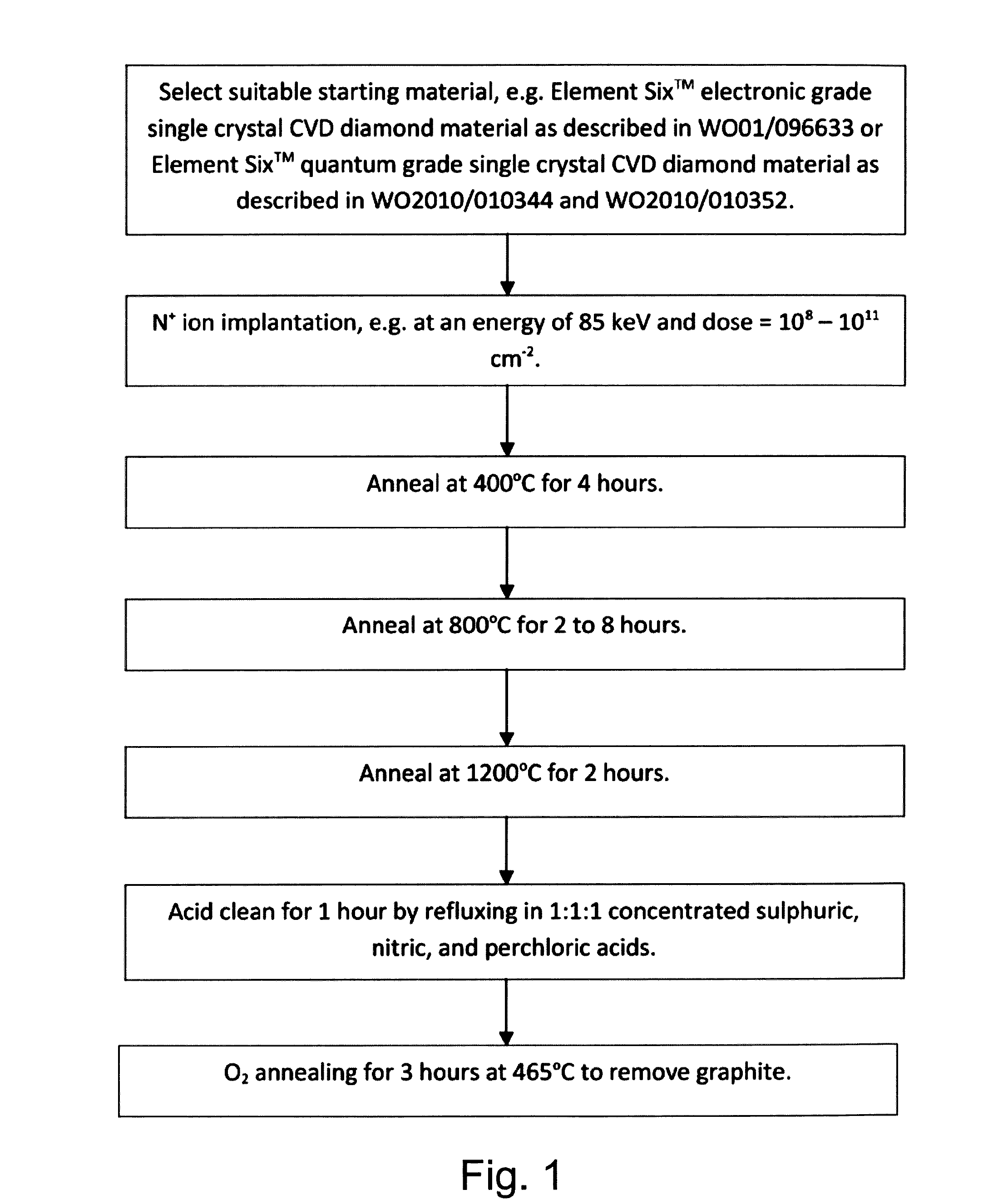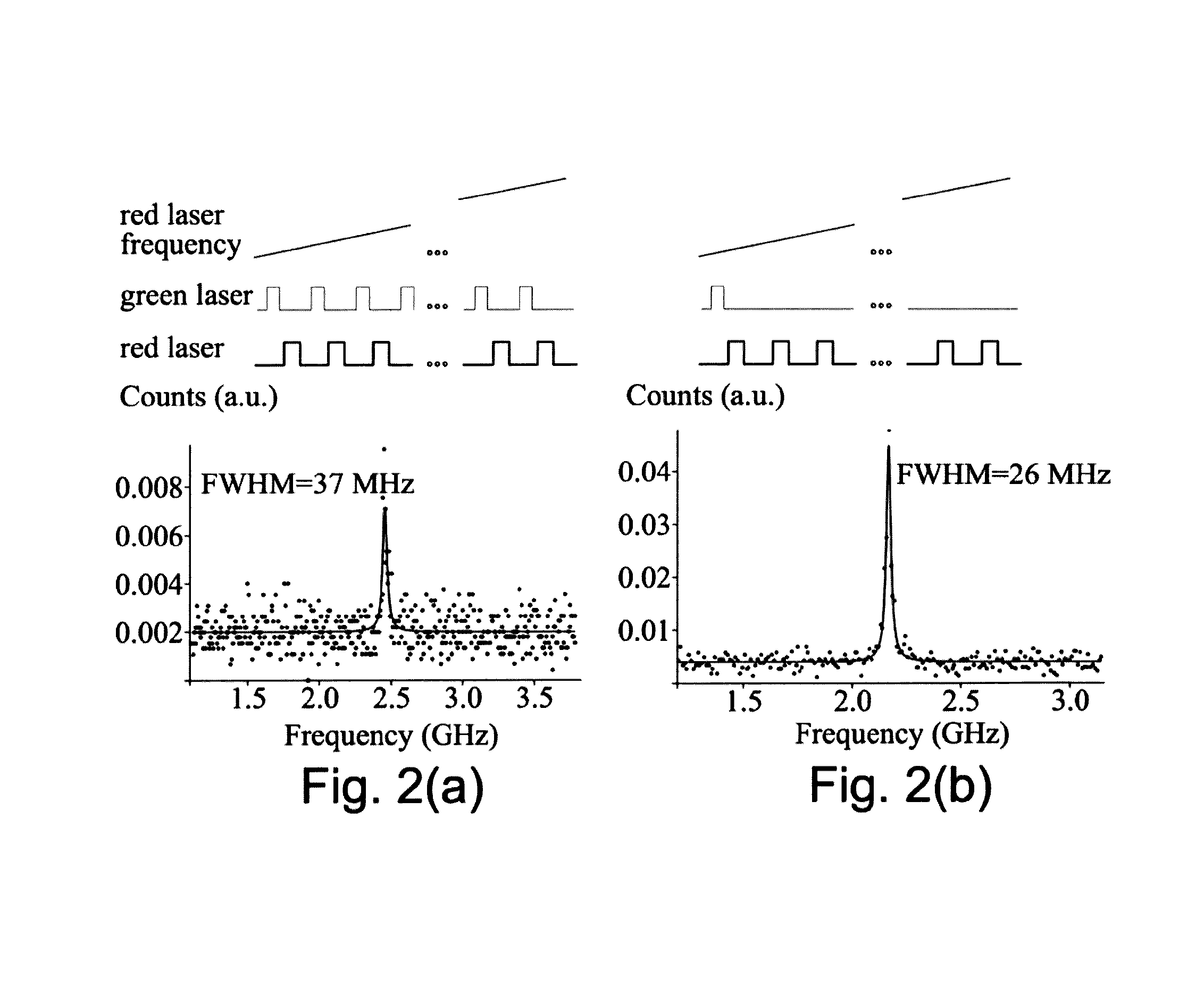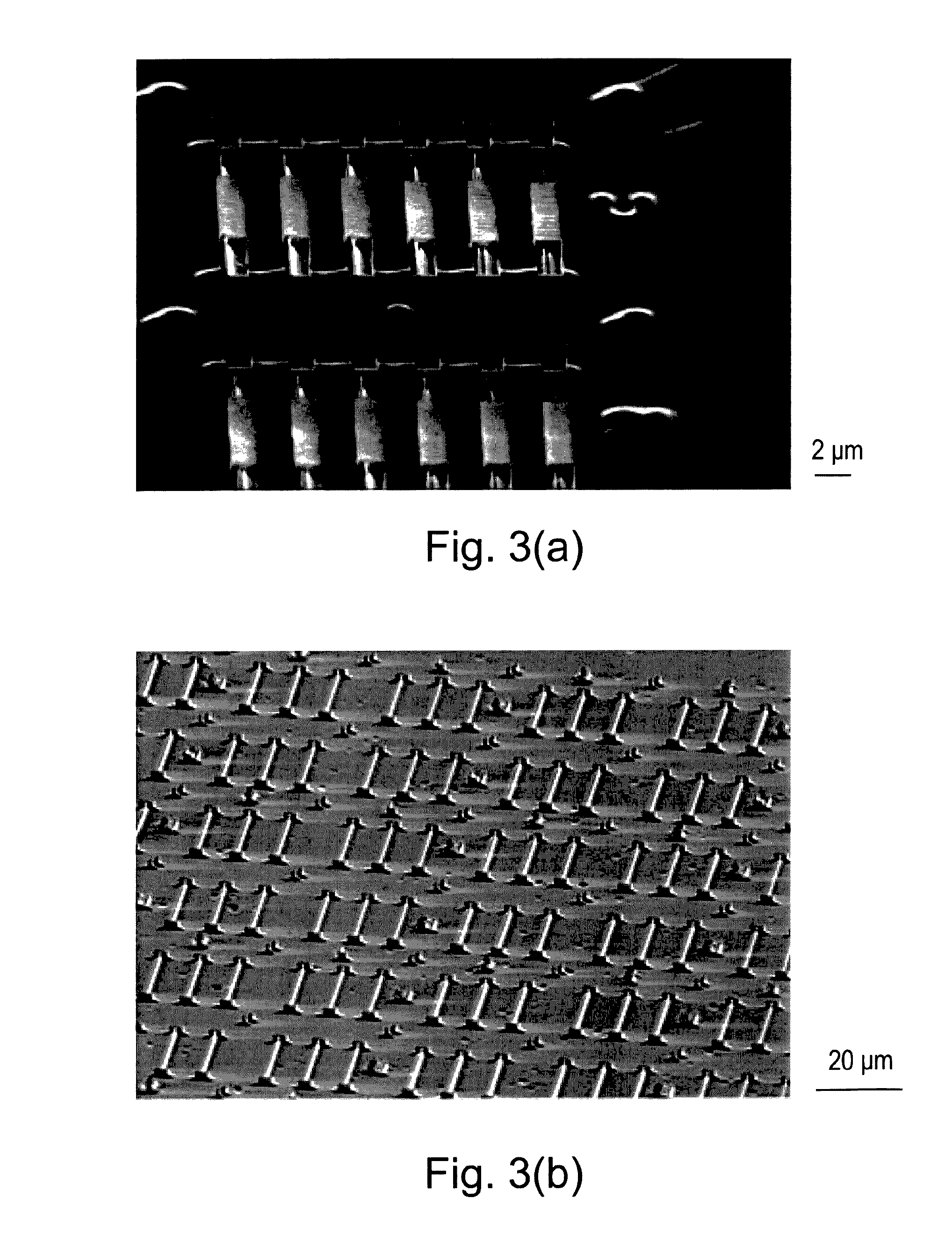Synthetic diamond materials for quantum and optical applications and methods of making the same
a diamond material and quantum optical technology, applied in the field of synthetic diamond materials, can solve the problems of reducing the effective collection efficiency, reducing the absorption cross-section, and affecting the approach of solid-state emitters
- Summary
- Abstract
- Description
- Claims
- Application Information
AI Technical Summary
Benefits of technology
Problems solved by technology
Method used
Image
Examples
Embodiment Construction
[0055]Embodiments of the present invention provide a route for synthesising solid state emitters with a zero phonon line width approaching that of the transform limited value and which is stable over time with minimal spectral diffusion. As indicated in the summary of invention section, a synthetic diamond material has been fabricated comprising spin defects having a full width half maximum intrinsic inhomogeneous zero phonon line width of less than 100 MHz. This has been achieved by a combination of: (i) selection of a suitable synthetic diamond material; and (ii) treatment of the selected synthetic diamond material using a multistage annealing technique.
[0056]The synthetic diamond material utilized as the staring material for fabricating the aforementioned is preferably a CVD synthetic diamond material and particularly a high purity, low strain CVD synthetic diamond material such as is described in WO01 / 096633, WO2010 / 010344, and WO2010 / 010352. These materials have a single substi...
PUM
| Property | Measurement | Unit |
|---|---|---|
| Temperature | aaaaa | aaaaa |
| Temperature | aaaaa | aaaaa |
| Temperature | aaaaa | aaaaa |
Abstract
Description
Claims
Application Information
 Login to View More
Login to View More - R&D
- Intellectual Property
- Life Sciences
- Materials
- Tech Scout
- Unparalleled Data Quality
- Higher Quality Content
- 60% Fewer Hallucinations
Browse by: Latest US Patents, China's latest patents, Technical Efficacy Thesaurus, Application Domain, Technology Topic, Popular Technical Reports.
© 2025 PatSnap. All rights reserved.Legal|Privacy policy|Modern Slavery Act Transparency Statement|Sitemap|About US| Contact US: help@patsnap.com



